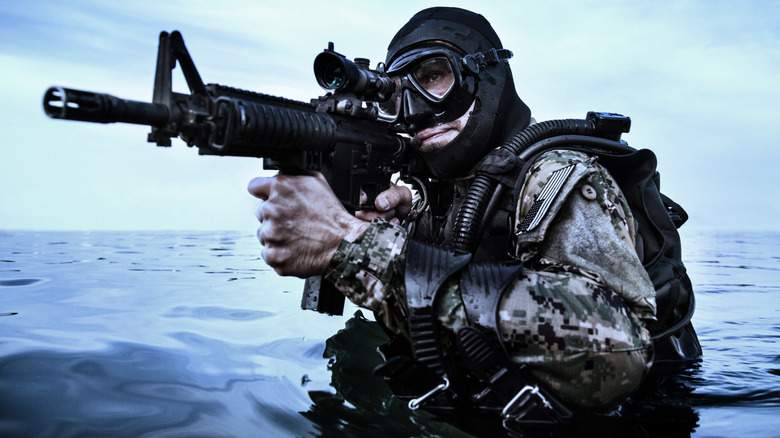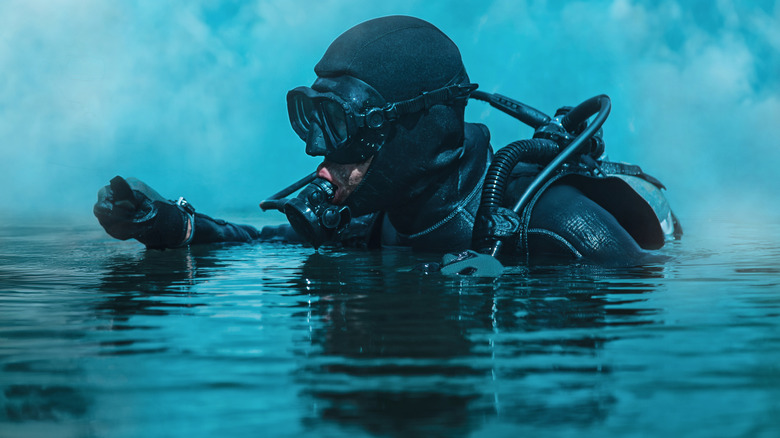What Does 'SEAL' Stand For In The Navy SEALs?
Navy SEALs are some of the most highly trained special operations forces in the world. Known for their grueling physical and mental preparation, as well as their cool pieces of gear, these elite soldiers operate in the most challenging locations imaginable. But have you ever wondered what the name "SEAL" actually means? SEAL stands for sea, air and land, describing the different environments the frogmen navigate while on a mission.
The Navy officially established the SEAL program in 1962, with the credit historically going to President John F. Kennedy, who had been a naval combat officer himself. However, the SEAL teams were a natural progression of the Navy's activities prior to JFK's 1961 letter to Congress which outlined an expansion of the military's special forces. Since the official birth of the program, the Navy SEALS have engaged in missions around the world, becoming one of the most respected military units of all time.
Perhaps the most well known SEAL unit is the counter-terrorist group SEAL Team 6, which was formed in 1980. Founded by the late Richard Marcinko, the team famously carried out the 2011 raid that resulted in the death of Osama Bin Laden.
The Navy SEALs date back to World War II
The history of the U.S. Navy SEALs and the awesome vehicles they use can be traced back to World War II in 1942, when two units began training in Chesapeake Bay, Virginia, for amphibious warfare in North Africa. That eventually led to the formation of the Amphibious Scouts and Raiders (S&R) unit, which specialized in observing and scouting beach locations for troop landing before the 1944 D-Day invasion in Normandy. The oceanic stage of the SEALs' evolution also included the Pacific Underwater Demolition Teams (UDT), which was formed in Oahu, Hawaii, in 1943.
These Navy divers, also known as Frogmen, went airborne during a dangerous mission in 1944 when Lieutenant Jack Taylor and his team parachuted into Austria. Though the team was eventually captured and Taylor was imprisoned in a Nazi concentration camp, he was released after the camp was liberated by American forces.
The SEAL missions continued in the years that followed World War II. The UDTs put their demolition expertise to work during the Korean War, applying the skills they used in underwater environments to surface operations.

